What is gout or inflammatory arthritis?

At a Glance:
2. What are the signs and symptoms of gout?
3. How frequent are gout attacks?
4. What are the causes of gout?
5. What are the risk factors of gout?
6. How do doctors diagnose gout?
7. What are the stages of gout?
8. What is the treatment of gout?
9. Are there any home remedies for gout? What food items should be avoided in gout?
10. What are the complications of untreated gout?
11. Which is the best hospital for gout treatment in Hyderabad?
What is gout?
Gout is a type of arthritis that is painful and it is caused due to a metabolic disturbance leading to an abnormally elevated level of a substance called uric acid in the blood. Usually, the large joint of the big toe is affected by gout, but many other joints like the ankles, knees, elbows, wrists, and fingers may also get affected at times.
Break down of a chemical called purine in the body leads to the production of uric acid. Purines are found naturally within the body and in certain foods. The body eliminates uric acid from the urine.
What are the signs and symptoms of gout?
Symptoms of gout are not persistent; they may come and go with periods of a flare-up in between. The signs and symptoms of gout are characterized by a sudden occurrence, usually at night. Some of the common symptoms are:
- Inflammation and redness in the affected area: The joint (s) affected by the condition may appear red and become swollen, warm and painful.
- Intense pain in the joints: The pain remains severe for the first twelve hours of onset.
- Limitation of range of motion: As an attack of gout progresses, there may be a limitation in the movement of the affected joint.
- Lingering discomfort: Some discomfort in the affected joint may last from a few days to a few weeks once the acute attack subsides. With time, the duration of the attacks becomes longer and more joints become affected.
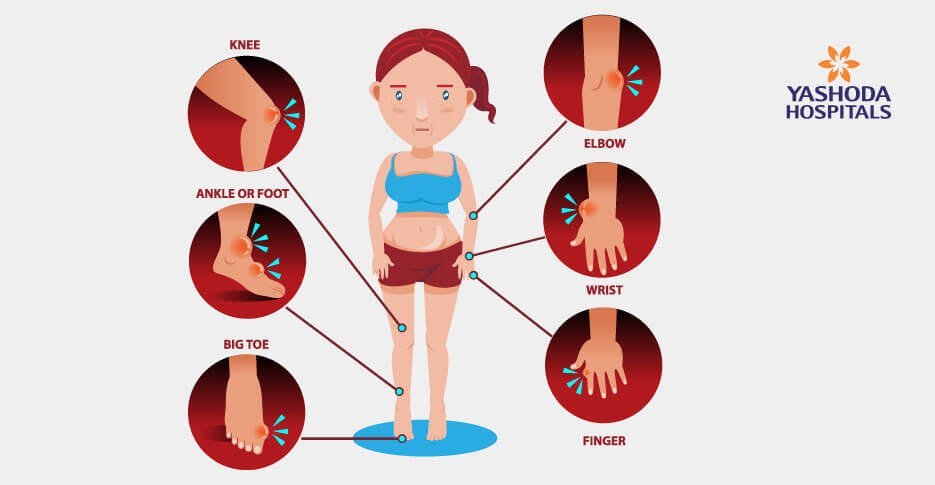
How frequent are gout attacks?
An acute episode of gout or a gout attack may occur rarely in the initial stages of the condition with the frequency being as low as once or a few times in several years. Later as time passes, the attacks can increase and less spaced several times a year.
The same or different joints may get affected by recurrent gout attacks. Each attack in the early stages of the condition may last up to one or two weeks.
What are the causes of gout?
In normal circumstances, the uric acid in the body gets dissolved in the person’s blood and it is excreted by the kidneys into the urine. Sometimes, the uric acid exceeds the normal levels, either due to too much production by the body or too little excretion by the kidney. The excess amount of uric acid in the blood leads to the formation of sharp, needle-like crystals called urate crystals within a joint or surrounding tissue during a gout attack. Accumulation of these crystals causes inflammation and intense pain within the joint.
What are the risk factors of gout?
The likelihood of developing gout increases with an increase in the levels of uric acid in a person’s body. Some commonly known factors that increase the uric acid level in the body include:
- Age and gender: Men are more prone to developing gout in contrast to women, who generally have lower levels of uric acid. However, once they achieve menopause, the uric acid levels of women approach those of men. Men usually develop gout in the age group of 30 to 50 years and women develop gout post-menopause.
- Diet: Certain food items like meats and seafood and fructose based beverages are known to increase levels of uric acid, and thereby gout.
- Family history: The presence of gout in close relatives in the family increases the person’s risk of developing the condition.
- Medical conditions: Certain ailments like uncontrolled hypertension, diabetes and chronic conditions like metabolic syndrome, heart and kidney diseases increase the risk of gout.
- Medications: Prolonged use of certain antihypertensive medications like thiazide diuretics, antiplatelet agents like low-dose aspirin, post-transplant anti-rejection drugs, etc increase the person's susceptibility of developing gout.
- Obesity: Overweight persons tend to have more uric acid in their bodies and the kidneys are unable to eliminate uric acid.
How do doctors diagnose gout?
Doctors diagnose gout based on a person’s medical history, physical examination, and medical tests. Some of the common investigations for gout are:
- Joint fluid test: Fluid drawn from the joint is examined under a microscope to visualize urate crystals.
- Blood test: A blood test to assess the levels of uric acid and creatinine may be advised even though at times the results may be inconclusive.
- X-ray: X-rays of the joint can help doctors rule out other causes of joint inflammation.
- Ultrasound: Sometimes and ultrasound may be advised to assess the urate crystals in the affected joint.
What are the stages of gout?
Gout passes through various stages that include:
Asymptomatic hyperuricemia: This stage is asymptomatic. However, the blood uric acid levels are high and crystals begin to form in the joint. It is the period just before the first gout attack.
Acute gout, or a gout attack: A sudden rise of uric acid levels trigger an acute attack of gout. Some examples being the consumption of alcoholic beverages like beer at a party or snacks of seafood. It is usually observed that the pain and inflammation typically present at night and become intense during the next eight to twelve hours. The symptoms lessen after a few days and disappear within a week or
so. It is estimated that nearly 60% of people experience a second attack of gout within a year of the first attack.
Interval gout: The period between two consecutive gout attacks is called interval gout. This is a low symptom stage, however within the joint, some amount of inflammation may persist, thereby causing joint damage. Lifestyle changes and medication strategies are routinely initiated in this stage.
Chronic gout: Persons whose uric acid levels remain persistently high over several years have chronic gout. In this stage, the attacks increase in frequency and the pain is consistent. Mobility is sometimes lost due to chronic joint damage.
Pseudogout: It is another form of arthritis that is characterized by a sudden painful swelling in one or more joints, the knee is the most commonly affected. An episode of pain can last for many days or weeks. The condition is caused due to deposition of crystals of calcium pyrophosphate and commonly termed as "pseudogout" due to its similarity to gout, but it is not gout.
What is the treatment of gout?
Gout is routinely managed by medication administration to treat a current acute attack, prevent future attacks and reduce a person’s risk of complications of gout.
Some of the medications that are commonly prescribed by rheumatologists in a higher dose during the acute attack may be followed by a low daily dose for prevention of gout:
- Nonsteroidal anti-inflammatory drugs (NSAIDs) pain relievers.
- Colchicine: A type of pain reliever.
- Corticosteroids: Oral tablets or injection-based steroids to control gouty inflammation and pain.
Some medications may be prescribed to prevent complications of gout in persons who suffer from frequent or very painful gout attacks:
- Medications to block the production of uric acid: Such medications may lower the uric acid level in the blood of a person to reduce the risk of gout.
- Uricosurics or medication to improve removal of uric acid: These medications improve the ability of the kidney to eliminate uric acid thereby reducing the risk of gout.
Since these medications may have strong side effects, they must be taken only on prescription by the rheumatologist.
Are there any home remedies for gout? What food items should be avoided in gout?
Even though medications are considered to be an effective way of treatment and prevention of acute gout, certain lifestyle changes and dietary management are also recommended for prevention of the condition:
- Regular exercise and maintaining a healthy weight
- Certain foods and beverages that are considered high in purines should be avoided during an acute attack and limited in intake for prevention of gout. Few of these include:
- Organ and glandular meats like liver and kidney have high purine levels thus they increase levels of uric acid in the blood.
- Red meat like beef, lamb, and pork.
- Seafood: Certain types of seafood like shellfish, sardines, and tuna have a higher amount of purines. In consultation with a dietitian, a moderate amount of fish that is low in purines may be consumed for its health benefits.
- Alcohol: Distilled liquors like beer are positively associated with an increased risk of gout and recurring attacks.
- Sugary foods and beverages: Food items that are sugar-sweetened such as fructose-based juices, cereals, bakery goods, and candies are high in purines.
- Food items that are considered to be of benefit in gout:
- Coffee: There is some evidence that drinking coffee in moderation may be of some benefit in gout. However, if a person has any medical condition, a physician should be consulted to ensure that coffee may be the right choice or not.
- Cherries: There is some evidence that cherries may be associated with a reduced risk of gout attacks.
- Yoga and meditation: Relaxation techniques such as yoga and meditation, may help a person not only in gout but also in general well-being.
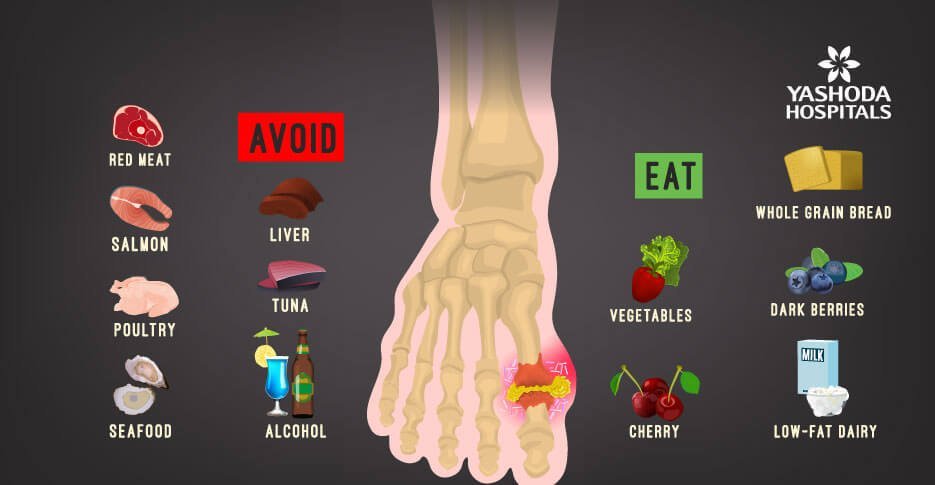
What are the complications of untreated gout?
If left untreated gout can cause:
- Erosion and destruction of the affected joint due to frequent attacks and inflammation
- A lump like collection of uric acid known as tophi may develop in the skin near the joints like fingers, hands, feet, elbows or erode into the bones.
- Kidney stones: Urate crystals may collect in the urinary tract or kidneys of persons with gout
Which is the best hospital for gout treatment in Hyderabad?
Treatment for gout in Hyderabad is available at few facilities as it requires multidisciplinary care. Yashoda Hospitals provides the best treatment of gout in Hyderabad. Along with the most modern and sophisticated facilities for the diagnosis and treatment of complex rheumatological conditions, the team at Yashoda Hospitals is led by some of the best rheumatologists in Hyderabad for treating gout. The rheumatologists of the hospital have undergone advanced training in the management of arthritic conditions like gout. The Center for Rheumatology for Joint Diseases is supported by a well-equipped orthopedic department and a dedicated physiotherapy department for the diagnosis, treatment, and rehabilitation of all persons with diseases of the joints.
Conclusion:
Gout is a type of arthritis caused by a metabolic disturbance in the level of uric acid in the body. Accumulation of uric acid crystals causes inflammation of the joints. Most commonly the big joint of the great toe is affected. During an acute episode, affected joints swell up and become painful. The inflammation normally subsides on its own within one to two weeks and the pain can be relieved with medication.
Most persons with gout experience acute attacks of gout now and then in a varying frequency ranging from months or even years. There are several options to prevent acute attacks of gout. Improvement may be noticed by avoiding certain foods and other contributing risk factors. Sometimes long term medications may be prescribed by rheumatologists to lower the uric acid levels in the blood, especially for persons who have frequent gout attacks or are prone to complications such as kidney stones or lumps called tophi. Untreated gout can lead to worsening pain and joint damage hence a person suspected to have gout should consult a rheumatologist as early as possible.
Reference:
- Institute for Quality and Efficiency in Health Care (IQWiG); Gout. Available at.https://www.ncbi.nlm.nih.gov/books/NBK284934/ Accessed on December 25, 2019
- Mayo Clinic. Gout. Available at: https://www.mayoclinic.org/diseases-conditions/gout/symptoms-causes/syc-20372897. Accessed on December 25, 2019
- U.S. National Library of Medicine. Gout. Available at. https://medlineplus.gov/gout.html. Accessed on December 25, 2019
- Mayo Clinic. Gout Diet: What’s allowed what’s not. Available at:https://www.mayoclinic.org/healthy-lifestyle/nutrition-and-healthy-eating/in-depth/gout-diet/art-20048524 . Accessed on December 25, 2019





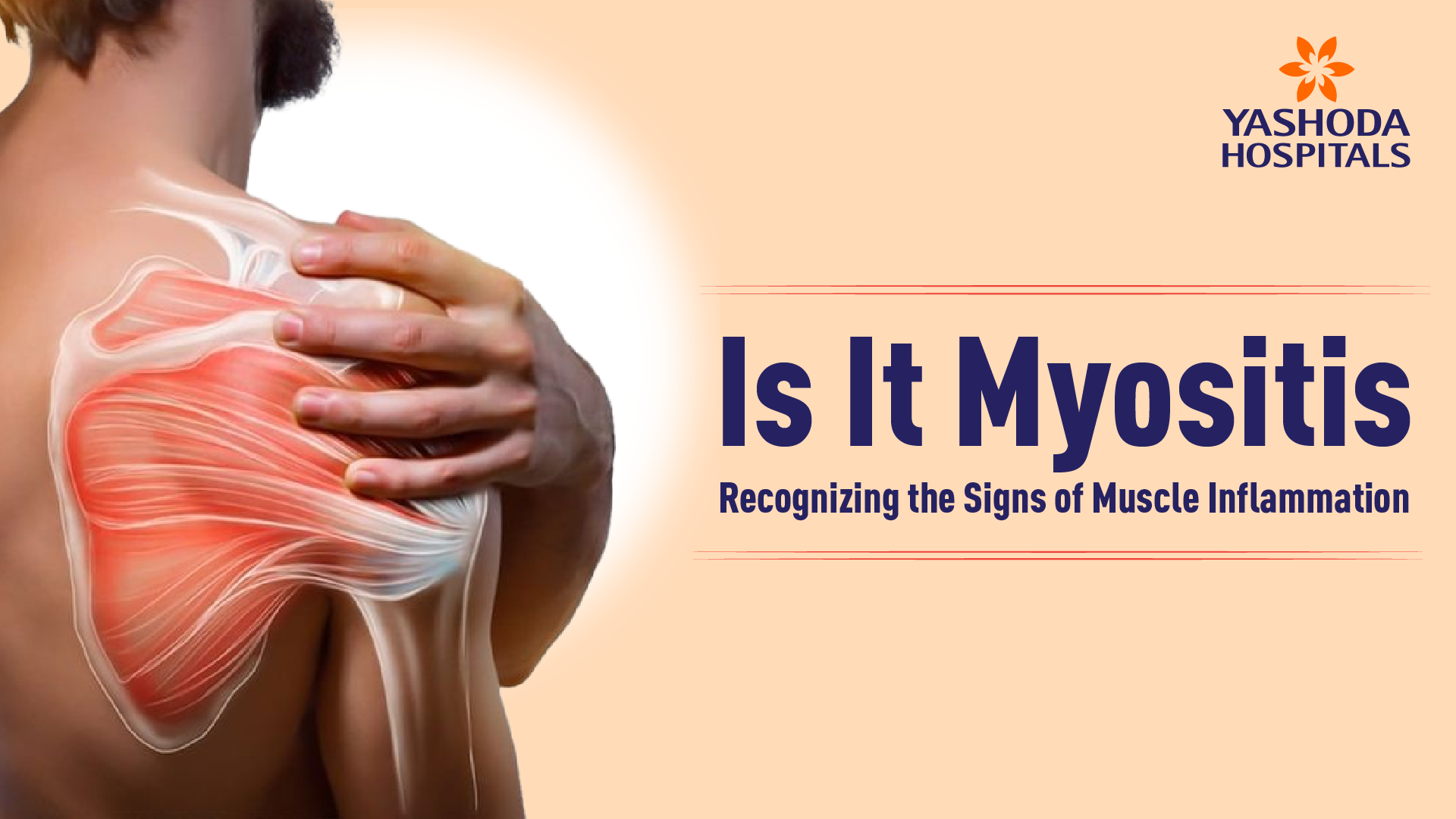


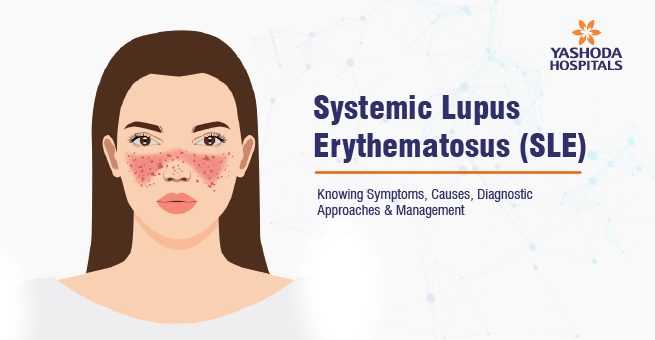


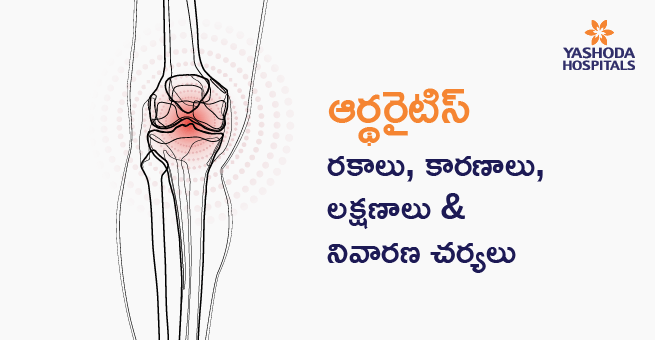
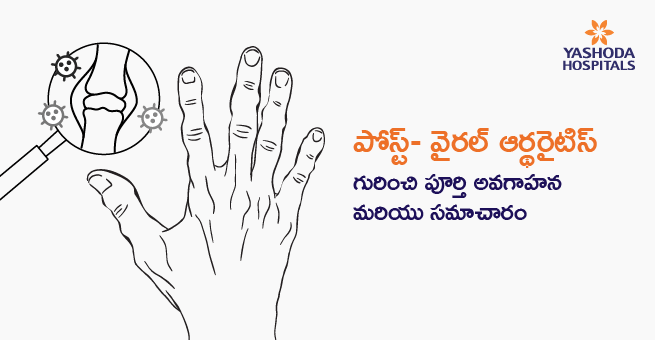

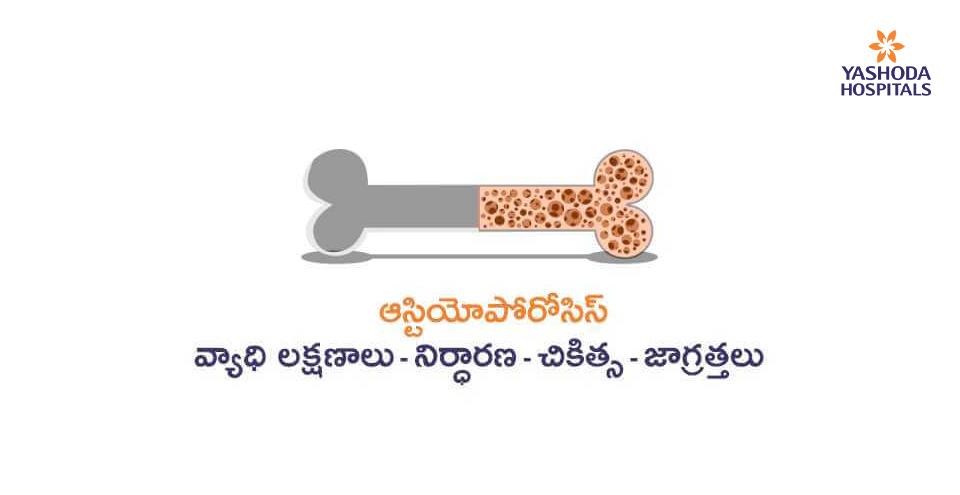






 Appointment
Appointment WhatsApp
WhatsApp Call
Call More
More